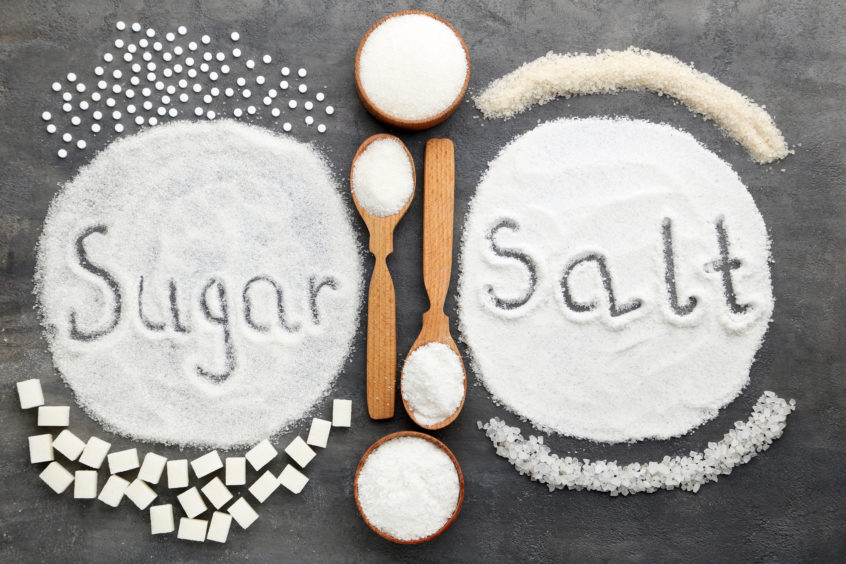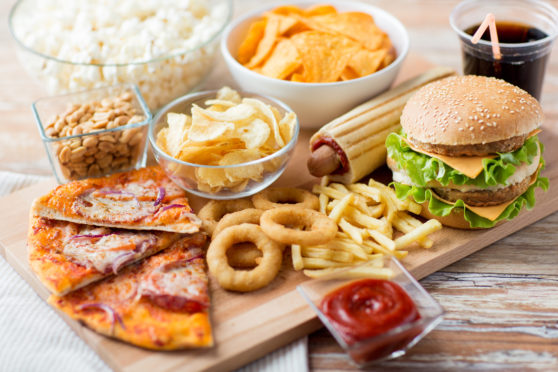Two food experts talk us through what goes into fast food… and why we keep going back for more.
We all know that eating junk food isn’t great for our health yet a lot of us see it as a treat, especially in times of stress.
It’s not surprising then, that during lockdown many have been craving their fix of high-calorie meals. And with fast-food outlets forced to close for weeks, absence definitely seems to have made the heart grow fonder.
At the start of the month news reports showed dozens of cars queuing up for the newly-re-opened Burger King in Dundee while last week in Elgin, police had to disperse queues outside the popular burger restaurant as they were causing a traffic jam.
Meanwhile public health campaign groups Action on Salt and Action on Sugar wrote to PM Boris Johnson calling for an advertising ban on unhealthy foods during the lockdown after claims that some food companies have been “capitalising on the government’s ‘stay at home’ message”.
The letter stated that food companies and delivery services have been “heavily promoting unhealthy food, even to the most vulnerable members of society, who are now a captive audience”.
But how bad is fast food, really? Why do we crave it and how often should we be eating it?
Dr Suzanne Zaremba, lecturer in nutrition at Dundee University’s School of Medicine is on hand to answer these questions and more, while Professor Alexandra Johnstone of Aberdeen University’s Rowett Institute of Nutrition and Health explains why food “addiction” is a myth.
“Whole food ingredients that make up fast food do not necessarily start out as being unhealthy”, said Dr Zaremba.
“If we take the example of chip shop fish and chips, potatoes and cod have a good nutritional value – low in fat and a good source of protein. But when cod is coated in batter and deep fried in fat along with the potatoes to make chips, it’s easy to see that preparation and cooking methods can drastically change the healthiness of a meal.
“Generally, deep frying anything is not good, so it’s bad news for us Scots. However, I am a big advocate for everything in moderation.
“We can enjoy fast food as part of a healthy and balanced diet and lifestyle. It’s difficult to quantify a ‘healthy’ number of takeaways we can eat each week.
“A takeaway or fast food are broad terms so it really does depend on what you order. We need to consider the type of fast food, how much is eaten and the overall lifestyle or needs of individuals.
Whole food ingredients that make up fast food do not necessarily start out as being unhealthy.
Dr Zaremba
“Following an active lifestyle and eating a good variety of foods throughout the week, such as fruit, vegetables, pulses, dairy, fish, wholegrains and limiting discretionary foods such as crisps, biscuits, cakes and sweeties should be our primary targets.
“Balance and variety are key. Be mindful of what you are also drinking – fizzy drinks, alcohol and some fruit juices can often have a lot of added sugar and calories.”
Dr Zaremba explained that fast food typically contains high amount of fat, salt and sugar, ingredients that make food taste good and make us more likely to crave it.
“Depending on your taste preferences, eating sugary, fatty and/or salty foods bring us feelings of pleasure and enjoyment, which in turn makes us want to eat more,” she added.

“Food cravings are a strong desire to eat a particular food that is often difficult to resist. A craving is different from hunger since eating a number of foods satisfies hunger.
“Everyone’s food cravings are different. This is because cravings are triggered by a number of factors, such as social, cultural and physiological and psychological influences. Emotional stress is a known factor linked to food cravings, and if we take chocolate as an example, in the UK chocolate is one of the most craved foods, whereas in Japan individuals are more likely to crave rice and sushi.
“Food cravings are completely normal and are not only experienced by females around the time of their period or during pregnancy. The science tells us that females experience cravings more than men do and that cravings tend to occur more commonly later in the day.
Depending on your taste preferences, eating sugary, fatty and/or salty foods bring us feelings of pleasure and enjoyment, which in turn makes us want to eat more.
Dr Zaremba
“In my opinion, certain individuals can have an addictive-like relationship with particular foods, perhaps causing them to over-eat. What we should focus on is behaviour – certain foods trigger a feeling of reward in our brain that make us feel good but food itself is not addictive.”
Dr Zaremba confirmed that advertising does play a big role in influencing the food we buy and eat, more so than we realise, as our environment is full of cues that can trigger our cravings, such as TV advertisements, adverts in bus stops and photos on social media.
She said: “Overcoming them is not so straightforward – wherever we go, we see adverts for sugary, salty and fatty foods and it is easy to access these foods – seeing or smelling these foods primes our brain to want to eat them because we know they will be pleasing to our taste buds.”
Meanwhile Professor Johnstone explained that for many people eating is intrinsically rewarding and reinforcing, and that food consumption is well-known to activate the reward system in the brain, particularly when we are hungry.
However, she said that cravings for certain foods don’t constitute an addiction.
“It is easy to see that the rewarding properties of food and their activation of the reward pathway might lead intuitively to the idea that food substances may have addictive properties”, she added.
“However, just because eating behaviour engages these reward systems, it does not necessarily follow that specific nutrients are able to evoke a substance addiction.
“Instead, the complex activation of the reward system as the initial step of the process ending in addiction can be viewed as being dependent on eating (subjectively) palatable foods irrespective of their nutritional/chemical composition.
“The concept of ‘food addiction’ has recently become popular both among researchers and the lay public as a possible way to understand weight gain and obesity, similar to that seen in chemical or “’substance-based’ and behavioural addictions. Food addiction is currently not a recognised condition by psychiatrists.”













